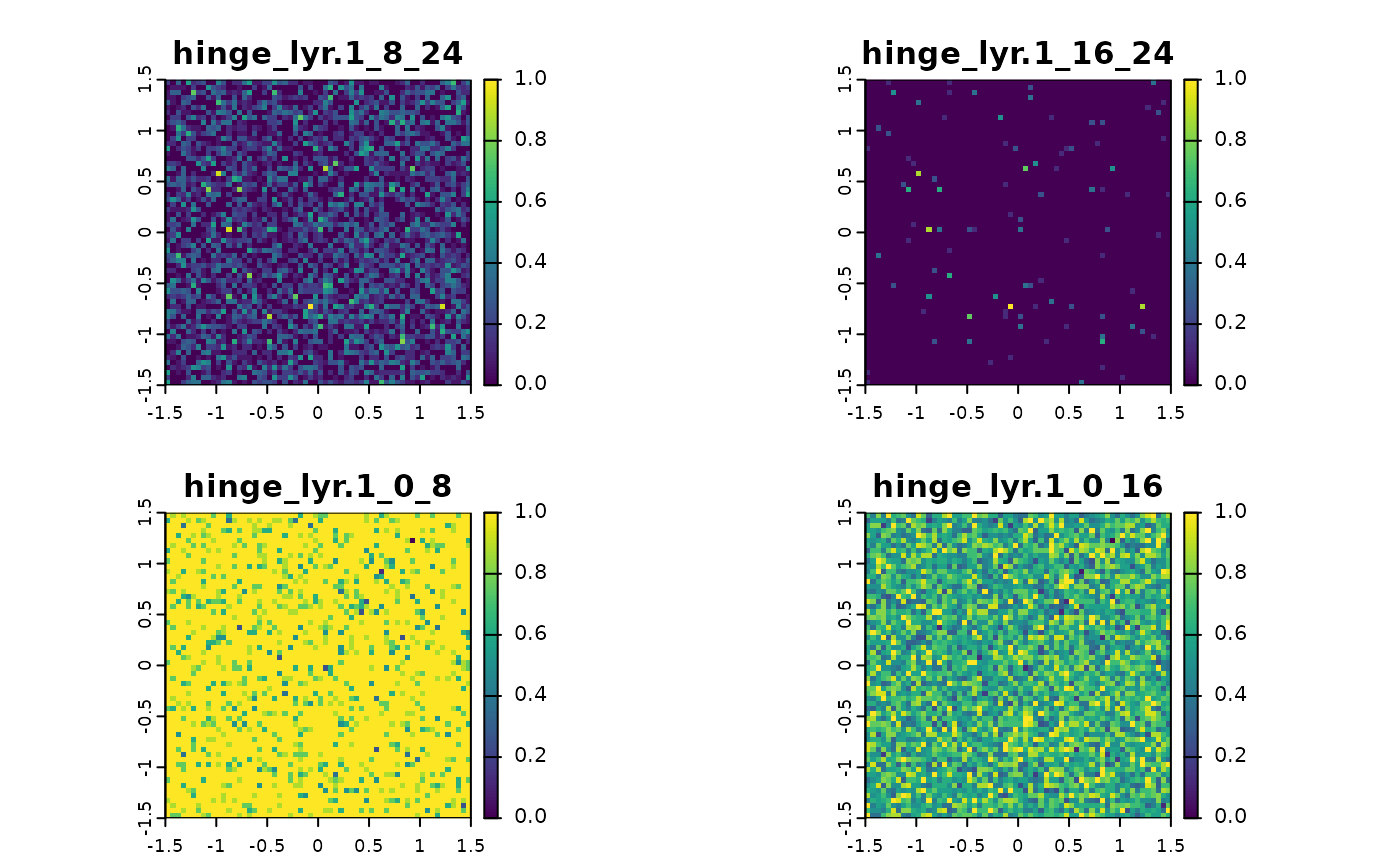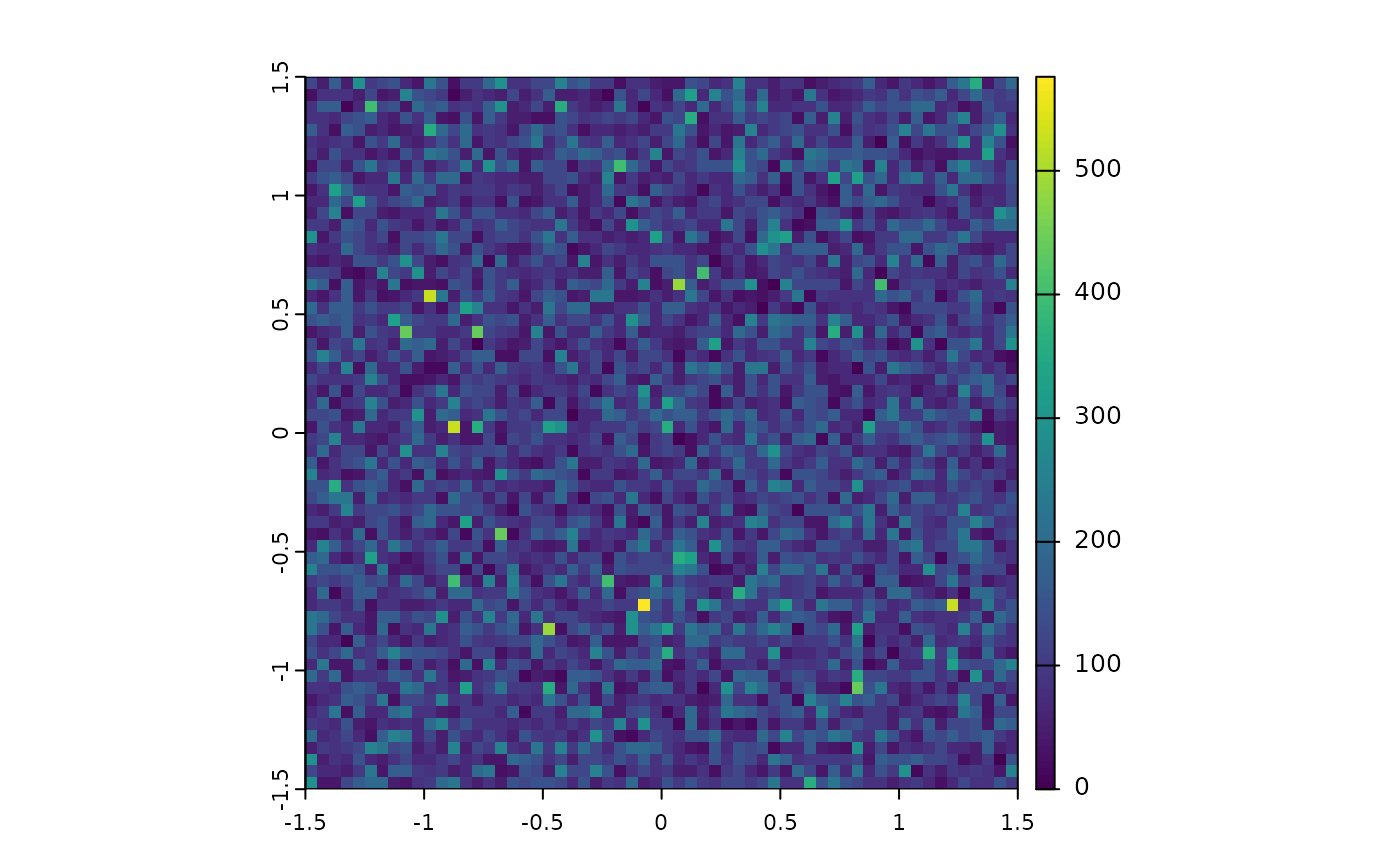This function creates derivatives of existing covariates and returns them in Raster format. Derivative variables can in the machine learning literature commonly be understood as one aspect of feature engineering. They can be particularly powerful in introducing non-linearities in otherwise linear models, for example is often done in the popular Maxent framework.
Usage
predictor_derivate(
env,
option,
nknots = 4,
deriv = NULL,
int_variables = NULL,
method = NULL,
...
)Arguments
- env
A
SpatRasterobject.- option
A
vectorstating whether predictors should be preprocessed in any way (Options:'none','quadratic','hinge','kmeans','thresh','bin').- nknots
The number of knots to be used for the transformation (Default:
4).- deriv
A
vectorwithcharacterof specific derivates to create (Default:NULL).- int_variables
A
vectorwith length greater or equal than2specifying the covariates (Default:NULL).- method
As
'option'for more intuitive method setting. Can be left empty (in this case option has to be set).- ...
other options (Non specified).
Value
Returns the derived adjusted SpatRaster objects of identical resolution.
Details
Available options are:
'none'- The original layer(s) are returned.'quadratic'- A quadratic transformation (\(x^{2}\)) is created of the provided layers.'hinge'- Creates hinge transformation of covariates, which set all values lower than a set threshold to0and all others to a range of \([0,1]\). The number of thresholds and thus new derivates is specified via the parameter'nknots'(Default:4).'interaction'- Creates interactions between variables. Target variables have to be specified via"int_variables".'thresh'- A threshold transformation of covariates, which sets all values lower than a set threshold at0and those larger to1. The number of thresholds and thus new derivates is specified via the parameter'nknots'(Default:4).'bin'- Creates a factor representation of a covariates by cutting the range of covariates by their percentiles. The number of percentile cuts and thus new derivates is specified via the parameter'nknots'(Default:4).'kmeans'Creates a factor representation of a covariates through akmeans()clustering. The number of clusters are specified via the parameter'nknots'.
Examples
# Dummy raster
r_ori <- terra::rast(nrows = 10, ncols = 10, res = 0.05, xmin = -1.5, xmax = 1.5, ymin = -1.5, ymax = 1.5, vals = rpois(3600, 10))
# Create a hinge transformation with 4 knots of one or multiple SpatRaster.
new <- predictor_derivate(r_ori, option = "hinge", knots = 4)
terra::plot(new)
 # Or a quadratic transformation
new2 <- predictor_derivate(r_ori, option = "quad", knots = 4)
terra::plot(new2)
# Or a quadratic transformation
new2 <- predictor_derivate(r_ori, option = "quad", knots = 4)
terra::plot(new2)

